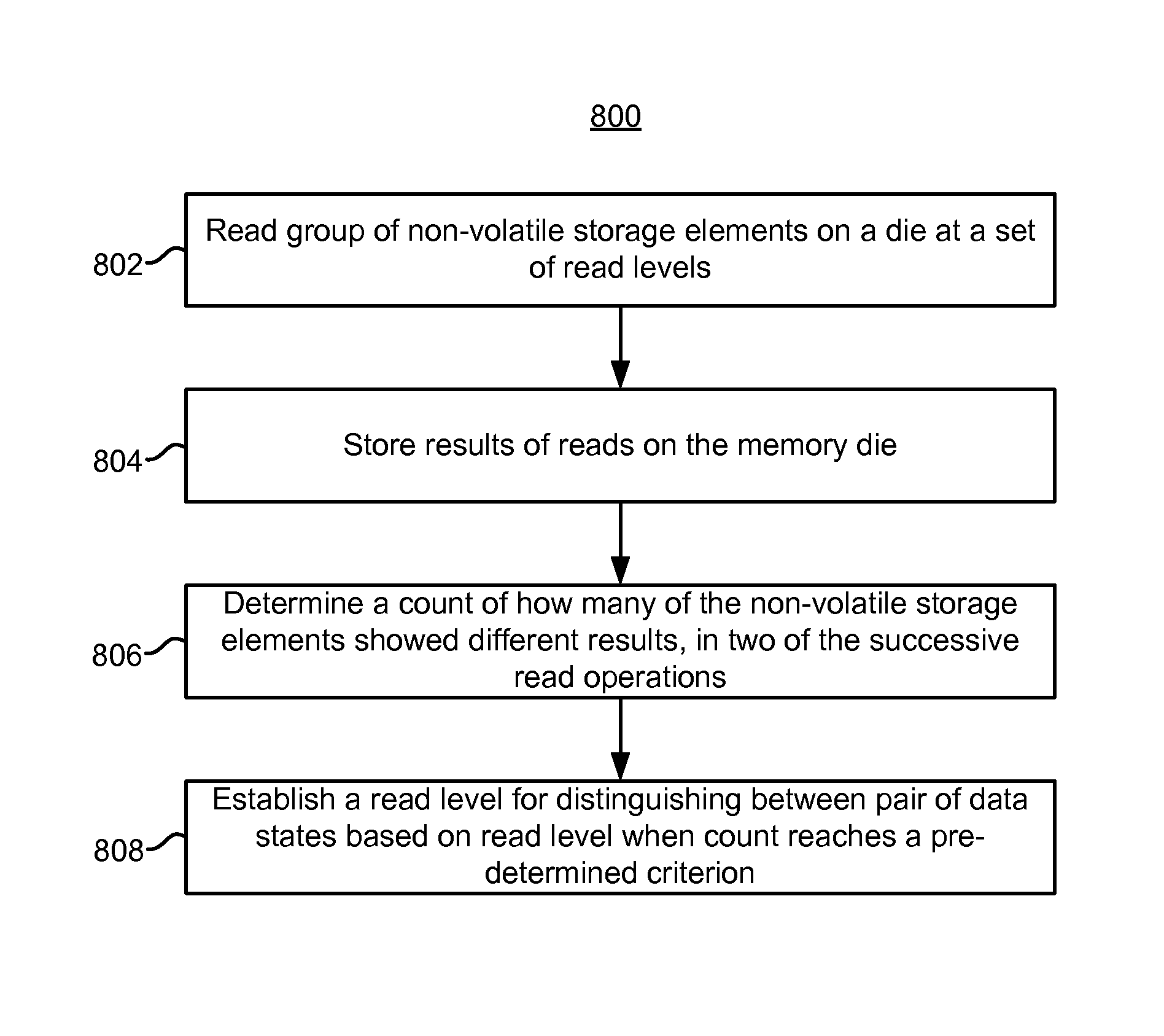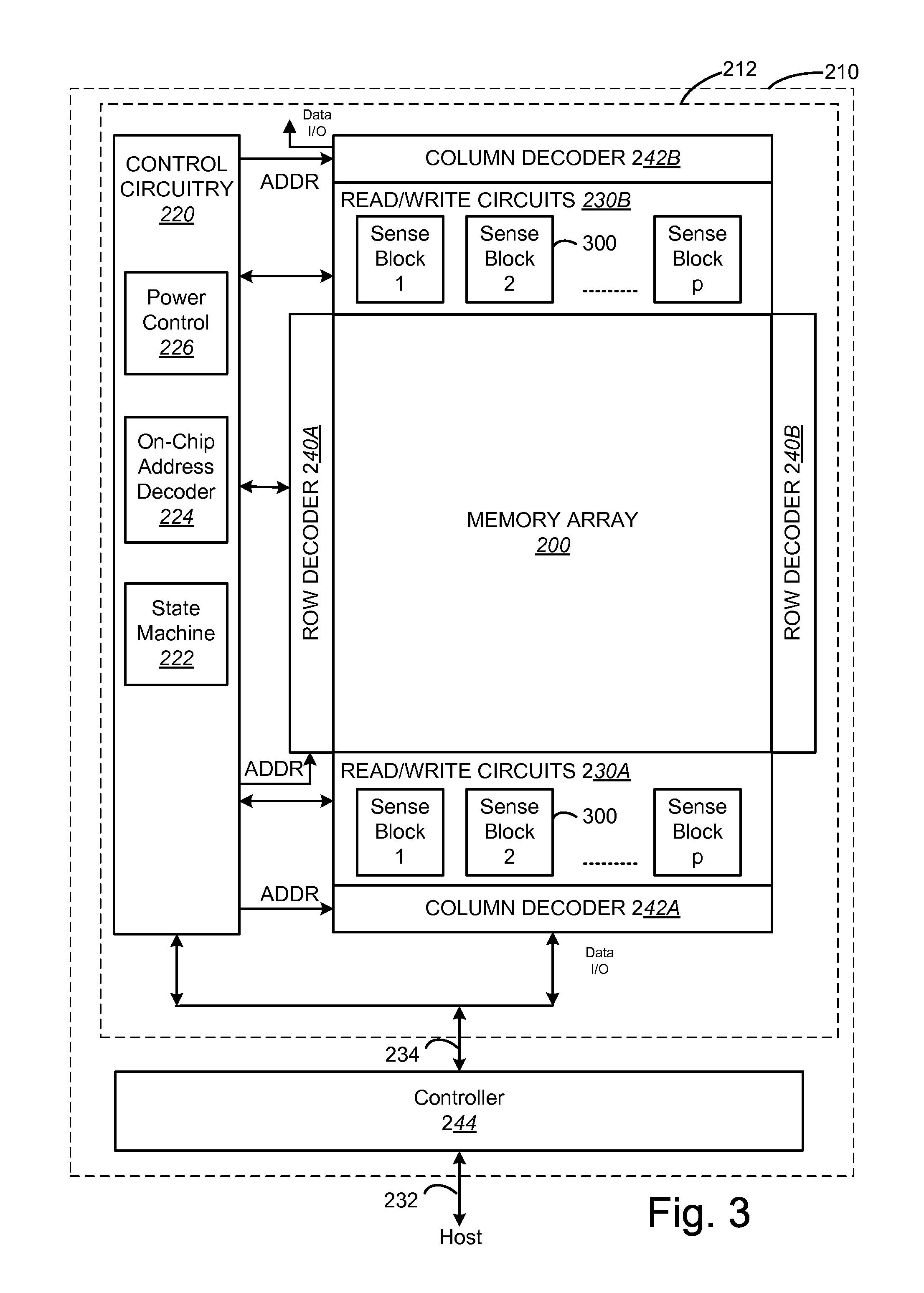On chip dynamic read for non-volatile storage
a dynamic read and non-volatile storage technology, applied in static storage, digital storage, instruments, etc., can solve the problems of large computation requirements, read errors can occur, and voltage distribution of a s
- Summary
- Abstract
- Description
- Claims
- Application Information
AI Technical Summary
Benefits of technology
Problems solved by technology
Method used
Image
Examples
Embodiment Construction
[0034]Dynamically determining read levels on chip (e.g., memory die) is disclosed herein. In one embodiment, an initial read of non-volatile storage elements (e.g., memory cells) is performed at a default read level. Note that this read may determine whether each memory cell has a threshold voltage above or below the read level. Results of the read may be stored in a first set of data latches on the memory die. Then, the read level may be adjusted slightly prior to reading again. Results of the second read may be stored in a second set of data latches. Then, the results in the two sets of data latches may be compared, on a memory cell by memory cell basis. In effect, the comparison may determine which memory cells showed a different result for the two reads (e.g., “mis-compares”). If the number of mis-compares is not less than a pre-determined threshold, then another read may be performed at another read level. When the number of mis-compares is less than the pre-determined threshol...
PUM
 Login to View More
Login to View More Abstract
Description
Claims
Application Information
 Login to View More
Login to View More - R&D
- Intellectual Property
- Life Sciences
- Materials
- Tech Scout
- Unparalleled Data Quality
- Higher Quality Content
- 60% Fewer Hallucinations
Browse by: Latest US Patents, China's latest patents, Technical Efficacy Thesaurus, Application Domain, Technology Topic, Popular Technical Reports.
© 2025 PatSnap. All rights reserved.Legal|Privacy policy|Modern Slavery Act Transparency Statement|Sitemap|About US| Contact US: help@patsnap.com



